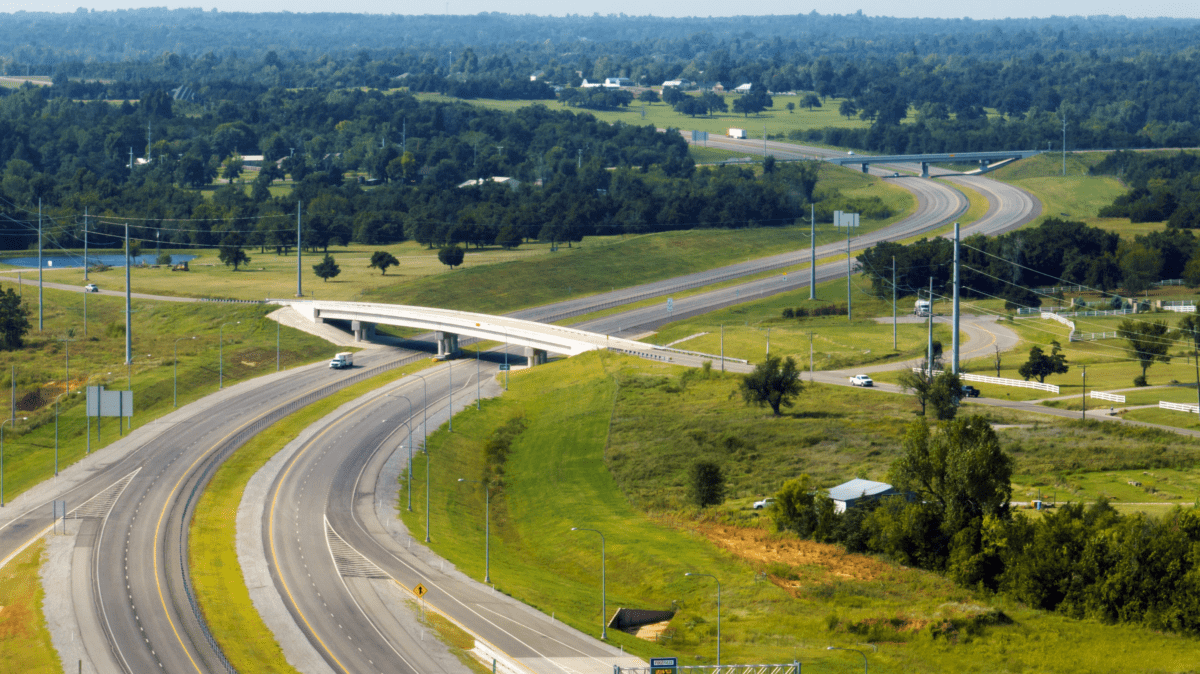Created in 1947, the Oklahoma Turnpike Authority (OTA) constructs, maintains, repairs and operates turnpike projects at locations authorized by the legislature and approved by the State Department of Transportation (ODOT). The OTA provided for construction of the state’s first turnpike – the Turner Turnpike. Today, Oklahoma has 12 turnpikes covering 630.1 miles.
“In 1947, Oklahoma did not have a paved, four-lane, high-speed highway,” says Lisa Shearer-Salim, OTA’s communications and marketing manager. “Our leaders were looking for ways to significantly improve transportation infrastructure in the state. The legislature knew there was a need for connecting and providing the infrastructure for further development of the state. But they needed an additional funding mechanism in their toolkit. That’s the genesis of how turnpikes began in Oklahoma.”
The state highway system is funded by the motor fuel tax (charged at the pump), federal funding and state appropriations. But the OTA network does not receive any tax mechanism. It is funded by tolls charged to users, and roughly 40% of those are out-of-state motorists.
“One of the most important aspects of the OTA network is that we provide a choice in travel,” says Shearer-Salim. “Typically, there is a state highway option nearby or connecting to a turnpike route.




“By introducing an alternative way to fund transportation, based on a pay-as-you-go model, it gives Oklahoma the opportunity to fill in the gaps in the transportation system. The turnpike network frees up ODOT to address other priorities in other areas of the state. There’s a lot of need in our state highway system for a lot of reasons, and there’s a very large backlog of necessary updates to the system. The OTA has filled in the gaps over the years in a timely fashion.”
OTA’s long range plans are addressing issues like widening the Turner Turnpike and the Will Rogers Turnpike, and adding new interchanges.
As well, the OTA funds about $20 million annually for the Oklahoma Highway Patrol troopers who are specifically assigned to the turnpike system. The OTA is working on increasing the number of troopers on the turnpikes.
PikePass Updates
The Turner Turnpike predated the advent of the nation’s interstate highway system.
“It was a modern marvel at the time,” Shearer-Salim says. “It was the first four-lane-divided highway west of the Mississippi. It has served the state incredibly well for 71 years.”
OTA’s initiative, the PIKEPASS electronic toll pass system, debuted in the early 1990s as one of the first in the nation.
“Today, we are going fully cashless,” Shearer-Salim says. “We have a camera system that reads your license plate and we match the license plate to the registered vehicle owner information.
“The No. 1 reason is safety. We have seen 500 crashes inside our toll booths, just in the last six years. In May this year, a car hit and knocked one of our toll booths off its base, with the toll booth attendant inside.”
By the end of 2024, all Oklahoma turnpikes will be converted to cashless. Motorists are guaranteed the lowest toll possible by getting a PIKEPASS at pikepass.com, through which their account is charged.
Or, OTA cameras read the car’s license tag and the motorist receives an invoice in the mail through the PlatePay system, which began in 2021. Go to PlatePay.com for information.























